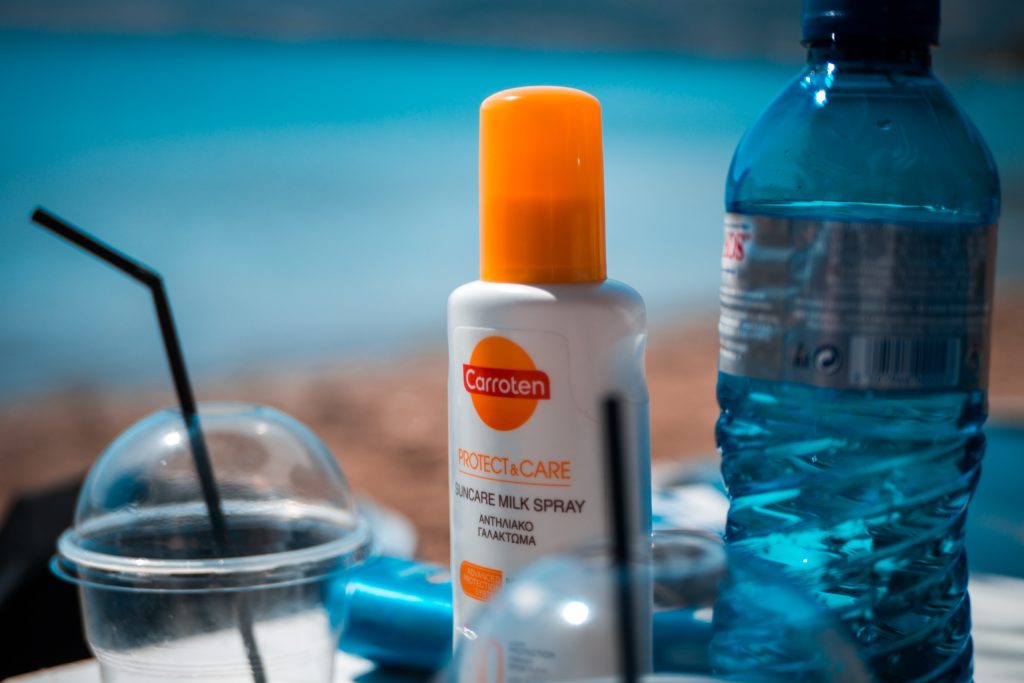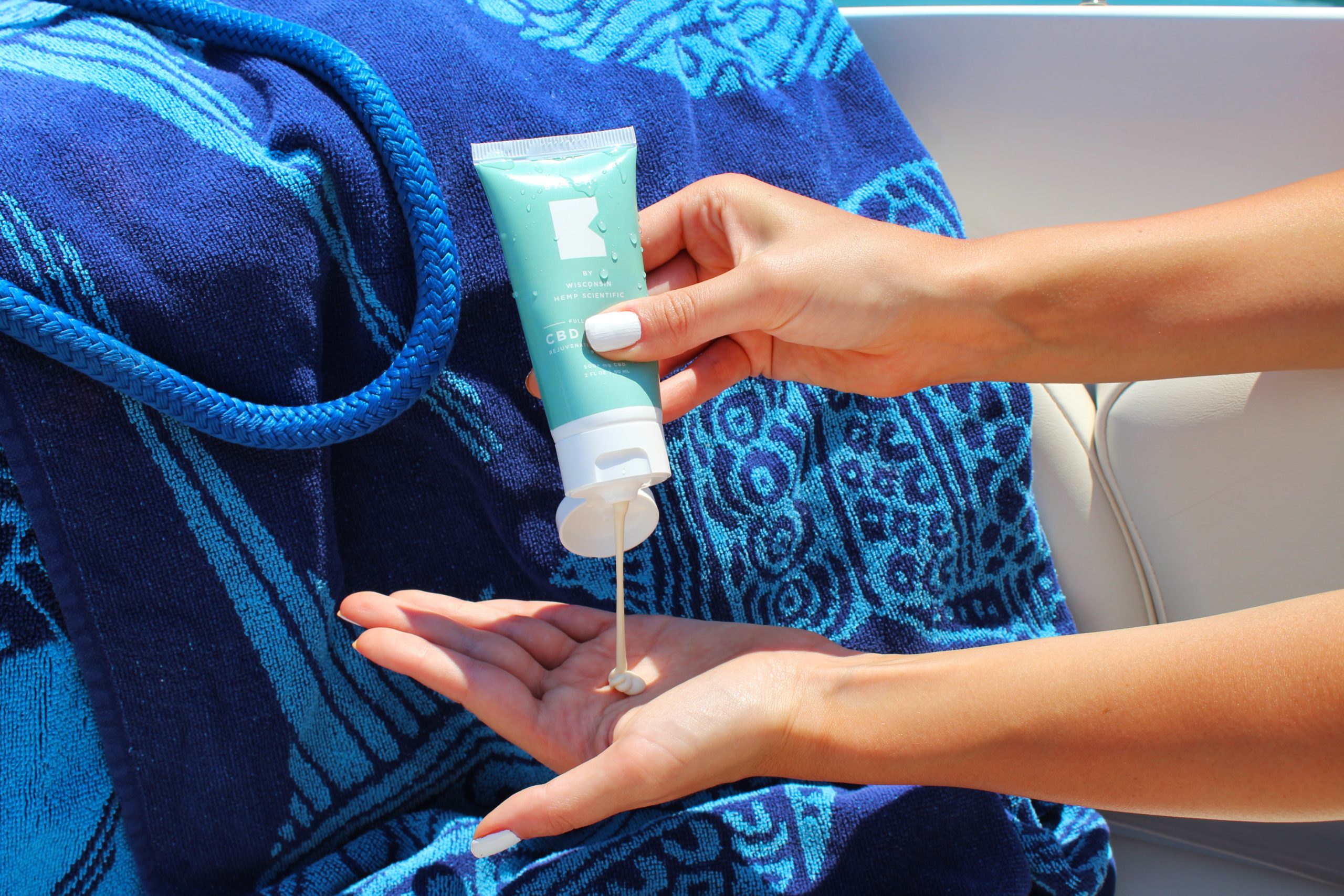We all love spending time outdoors, especially on sunny days. Whether lounging at the beach, hiking in the mountains, or running errands, we all love soaking up the sun. But have you ever stopped to think about the damage that those UV rays are doing to your skin?
Sunscreen is one of the most important tools to protect our skin from harmful UV rays, but with so many options, it can be hard to know which one to choose.
In this article, we’ll give you the 411 on sunscreen, including what it is, how it works, and how to choose the right one for your skin type.
We’ll also discuss the link between sunscreen and skin cancer, proper application techniques, and even eco-friendly alternatives.
Understanding Sunscreen

What Is Sunscreen?
Sunscreen is a topical product that is applied to the skin to protect it from the harmful effects of the sun’s ultraviolet (UV) rays. It is a type of lotion, gel, or spray that contains a combination of ingredients that work to reflect, absorb, and scatter UV radiation.
How Does It Work?
Sunscreen works by creating a barrier between the skin and the sun’s UV rays. When applied to the skin, the active ingredients in sunscreen absorb or reflect the UV rays, preventing them from penetrating the skin and causing damage. Some sunscreens also contain ingredients that help to neutralize free radicals, which can cause skin aging and other damage.
Types of Sunscreen
There are two main types of sunscreen: chemical and physical. Chemical sunscreens work by absorbing UV rays, while physical sunscreens (also called mineral sunscreens) work by reflecting UV rays. Chemical sunscreens usually contain ingredients like avobenzone, octinoxate, and oxybenzone, while physical sunscreens contain minerals like zinc oxide and titanium dioxide.
In addition to chemical and physical sunscreens, there are also combination sunscreens that contain a mix of both types. There are also tinted sunscreens, which can be used as a light foundation or to even out skin tone while providing sun protection.
It’s important to note that not all sunscreens are created equal, and some may not provide adequate protection against both UVA and UVB rays.
When choosing a sunscreen, look for one that is broad-spectrum, meaning it protects against both UVA and UVB rays.
Additionally, make sure to choose a sunscreen with a sun protection factor (SPF) of at least 30, as recommended by dermatologists.
Choosing the Right Sunscreen
Choosing the right sunscreen is crucial in protecting your skin from the harmful effects of the sun’s ultraviolet (UV) rays. Here are some factors to consider when choosing sunscreen:
- Sun Protection Factor (SPF): SPF measures the level of protection against UVB rays. It is recommended to use sunscreen with an SPF of 30 or higher.
- Broad-Spectrum Protection: Choose a sunscreen that provides broad-spectrum protection against both UVA and UVB rays. UVA rays are responsible for premature aging and can contribute to skin cancer, while UVB rays cause sunburns.
- Skin Type: Consider your skin type when choosing sunscreen. For example, those with oily or acne-prone skin may prefer a lightweight, oil-free formula, while those with dry skin may prefer a more hydrating formula.
- Water Resistance: If you plan on swimming or sweating, choose a water-resistant sunscreen that will stay on your skin for longer.
- Active Ingredients: Look for active ingredients such as zinc oxide or titanium dioxide, which physically block UV rays from penetrating the skin.
How to Apply Sunscreen
Proper application of sunscreen is important to ensure maximum protection against the harmful effects of the sun’s UV rays.
Proper Application Techniques
Here are some tips for applying sunscreen:
- Apply generously: The American Academy of Dermatology recommends using one ounce (about a shot glass full) of sunscreen to cover the exposed areas of your body. Applying too little can decrease the effectiveness of the sunscreen.
- Apply 15-30 minutes before sun exposure: This allows the sunscreen to be absorbed into the skin and provides better protection.
- Reapply every two hours: Sunscreen can wear off over time, especially if you are sweating or swimming. Make sure to reapply every two hours or more frequently if you are in and out of water.
- Use a broad-spectrum sunscreen: Look for a sunscreen that offers both UVA and UVB protection.
- Pay attention to expiration dates: Sunscreen can lose effectiveness over time, so check the expiration date before using.
- Don’t forget to cover all exposed areas: This includes your face, ears, neck, hands, and any other exposed areas.
Common Mistakes to Avoid
Now, let’s discuss some common mistakes to avoid when applying sunscreen:
- Not using enough sunscreen. Using too little sunscreen will not provide adequate protection against the sun’s harmful rays.
- Not reapplying sunscreen often enough. Sunscreen needs to be reapplied every two hours or immediately after swimming, sweating, or towel-drying.
- Applying sunscreen after being in the sun. Sunscreen needs to be applied 15-30 minutes before going out in the sun to allow it to absorb fully into your skin.
- Only apply sunscreen on sunny days. The sun’s harmful rays can still penetrate through clouds, so it’s essential to wear sunscreen even on cloudy days.
- Using expired sunscreen. Check the expiration date on your sunscreen and replace it if it’s expired.
Sunscreen and Skin Cancer

Link Between Sunscreen and Skin Cancer
Skin cancer is a serious and potentially deadly disease often caused by prolonged exposure to the sun’s harmful ultraviolet (UV) rays.
The good news is that there is a link between using sunscreen and reducing the risk of skin cancer. Sunscreen can help prevent skin cancer by protecting the skin from the harmful effects of UV rays.
Importance of Using Sunscreen in Skin Cancer Prevention
UV rays are known to cause DNA damage in skin cells, which can lead to the development of skin cancer. However, sunscreen helps prevent this damage by absorbing or reflecting the UV radiation, thus reducing the amount of UV radiation that reaches the skin. Additionally, sunscreen helps prevent sunburn, a significant risk factor for skin cancer.
It is important to note that not all sunscreens are created equal. When choosing a sunscreen, it is essential to choose one that offers broad-spectrum protection, which means it protects against both UVA and UVB rays. Choosing a sunscreen with a high sun protection factor (SPF) of 30 or higher is also crucial.
Furthermore, applying sunscreen correctly is crucial to its effectiveness in preventing skin cancer. Sunscreen should be applied liberally and evenly to all exposed areas of the skin, including the face, neck, arms, and legs.
Applying sunscreen at least 15 minutes before sun exposure is recommended, and reapply every two hours or more often if swimming or sweating.
Other Sun Protection Measures
In addition to using sunscreen, there are other sun protection measures you can take to protect your skin from harmful UV rays. One of the most important measures is to wear protective clothing when you are out in the sun for extended periods of time.
Protective clothing can include long-sleeved shirts, hats with a wide brim, and sunglasses with UV protection.
Wearing protective clothing is especially important during peak sun hours, which are generally from 10 a.m. to 4 p.m. When choosing clothing for sun protection, it is important to look for materials that have a tight weave or are made of specialized fabrics that offer UPF (ultraviolet protection factor) protection.
UPF clothing is specifically designed to block out harmful UV rays and can be found in many outdoor and sporting goods stores.
Another important sun protection measure is to seek shade whenever possible. Whether at the beach, on a hike, or simply spending time in your backyard, it is important to seek out shade areas to help reduce your exposure to the sun. This can include sitting under an umbrella, under a tree, or in a covered area.
In addition to wearing protective clothing and seeking shade, it is also important to be mindful of your overall sun exposure. Avoiding tanning beds, limiting your time in direct sunlight, and staying hydrated can all help to protect your skin from the damaging effects of the sun.
Sunscreen and the Environment
Sunscreen plays a vital role in protecting our skin from the harmful effects of the sun’s ultraviolet (UV) rays. However, some types of sunscreen can also have a negative impact on the environment.
In particular, some sunscreen ingredients have been found to harm coral reefs and other marine life.
One of the most damaging sunscreen ingredients is oxybenzone. This chemical has been shown to cause coral bleaching and disrupt the growth and reproduction of coral reefs. Other harmful ingredients include octinoxate and homosalate, which can also damage marine life.
Eco-Friendly Sunscreen Alternatives
To minimize the environmental impact of sunscreen, it is important to choose eco-friendly alternatives.
Mineral-based sunscreens that use zinc oxide or titanium dioxide as the active ingredient are generally considered safer for the environment. These ingredients do not break down into harmful chemicals and are less likely to harm coral reefs and other marine life.
Another option is to look for sunscreens labeled “reef-safe” or “ocean-friendly.” These products have been tested to ensure they do not contain harmful ingredients and are safe for marine ecosystems.
In addition to choosing eco-friendly sunscreen, there are other steps you can take to protect the environment while enjoying the sun. For example, you can wear protective clothing such as hats and long-sleeved shirts and seek shade during peak sun hours.
Conclusion
Taking care of our skin by wearing sunscreen is crucial for our overall health and wellness. By understanding what sunscreen is, choosing the right type for our skin, and properly applying it, we can protect ourselves from the harmful effects of the sun.
Moreover, we can reduce the risk of skin cancer and premature aging by taking other sun protection measures, like wearing protective clothing and seeking shade.
Let’s not forget that our environment is also affected by our sunscreen choices, so opting for eco-friendly alternatives can also make a positive impact.
Frequently Asked Questions on Sunscreen
1. What does SPF mean?
SPF stands for Sun Protection Factor, which measures how well a sunscreen protects against UVB rays, which are the main cause of sunburn.
2. Can I use sunscreen on my face?
Yes, sunscreen can be used on your face, but be sure to choose a non-comedogenic product (doesn’t clog pores) and fragrance-free.
3. How often should I apply sunscreen?
It’s recommended to apply sunscreen at least every two hours or more frequently if you’re swimming or sweating.
4. Can sunscreen expire?
Yes, sunscreen can expire. Check the expiration date on the packaging, and discard any sunscreen past its expiration date.
5. Can sunscreen cause skin irritation?
Yes, some people may experience skin irritation or an allergic reaction to certain sunscreen ingredients. If you experience any discomfort or irritation, stop using the product and speak to a healthcare professional.
6. Is it safe to use sunscreen every day?
Yes, it’s safe to use sunscreen every day. In fact, wearing sunscreen daily can help protect your skin from the long-term effects of sun damage, such as wrinkles and skin cancer.



